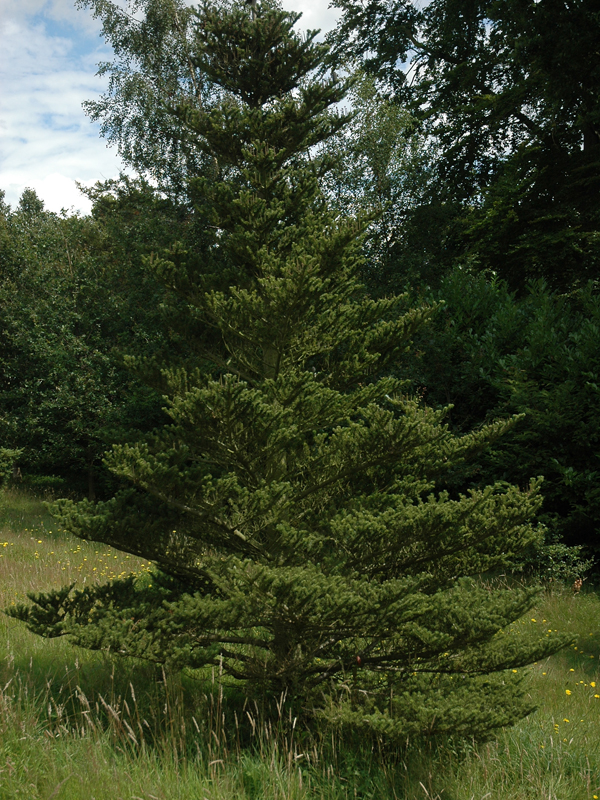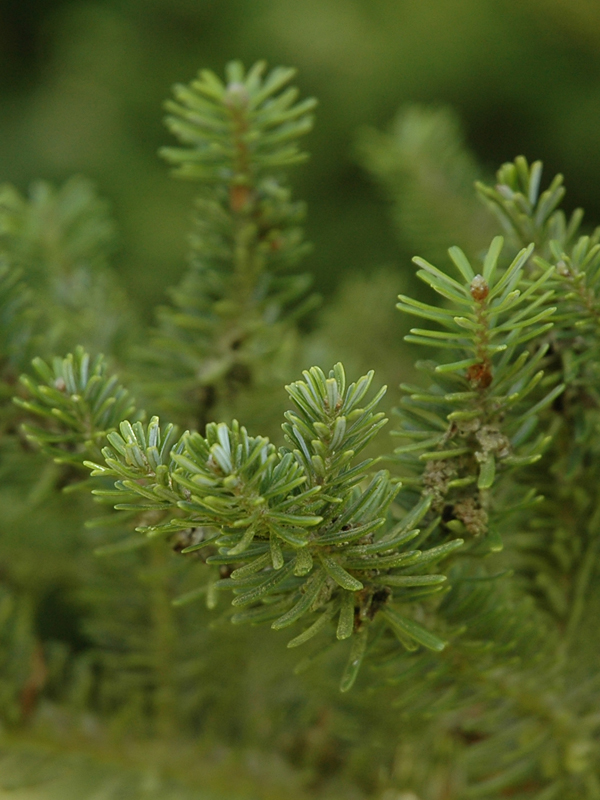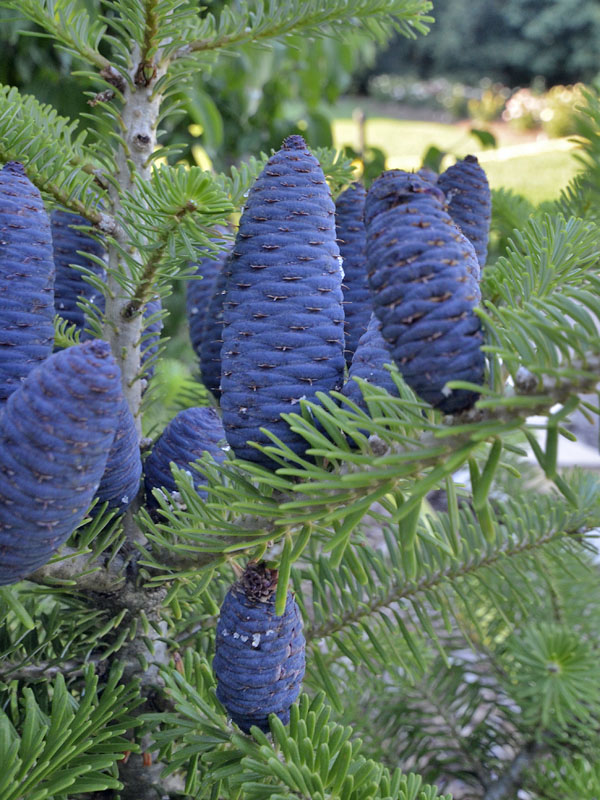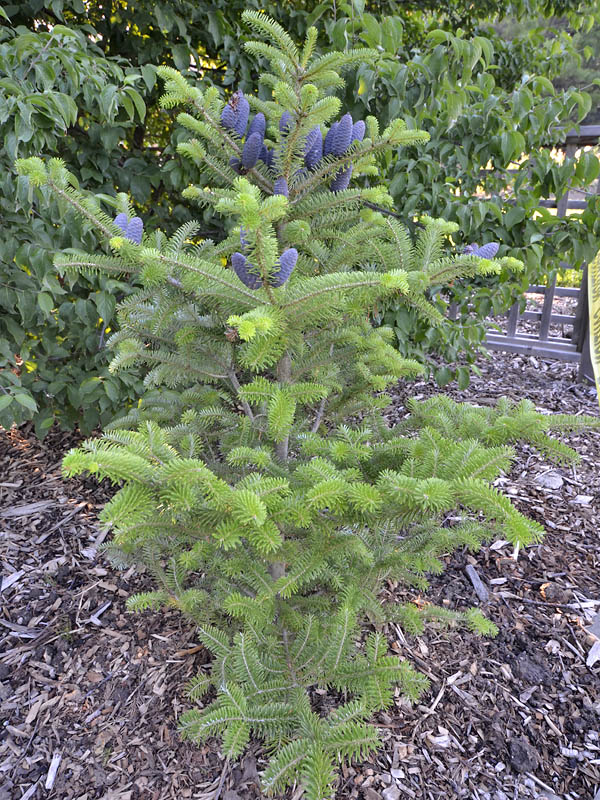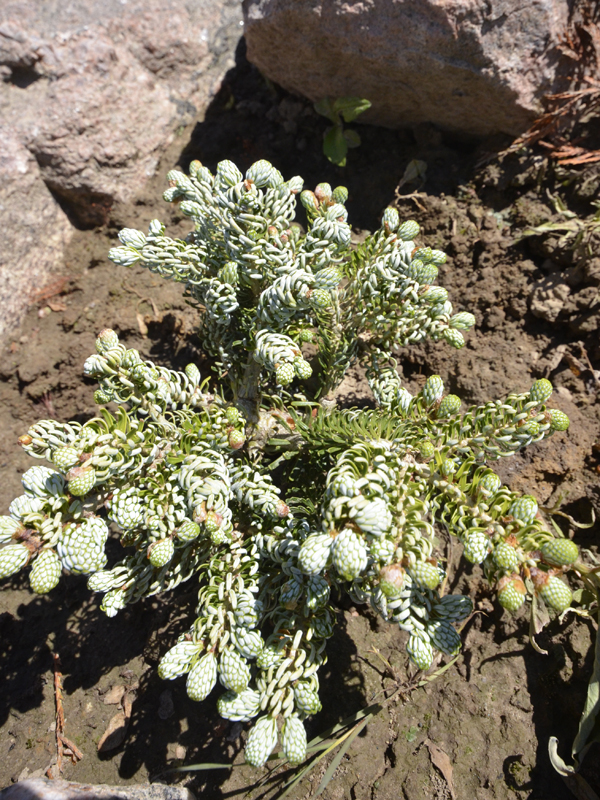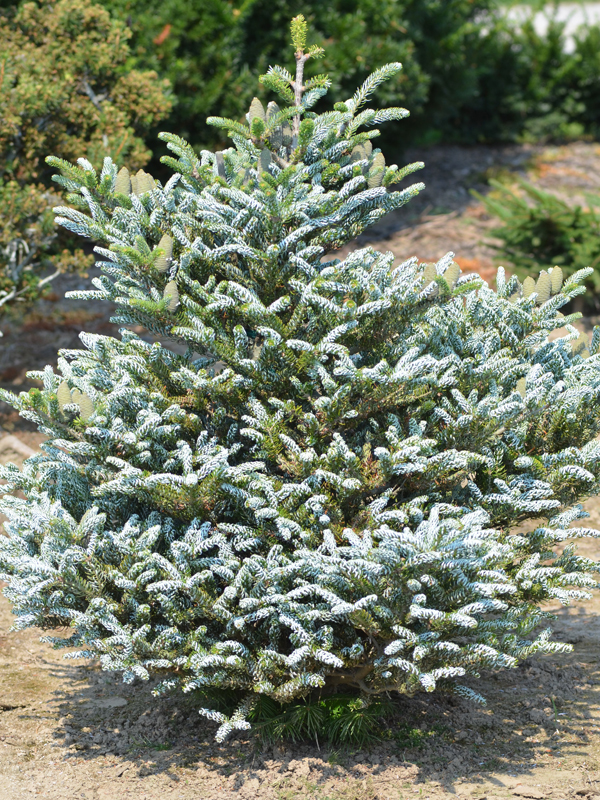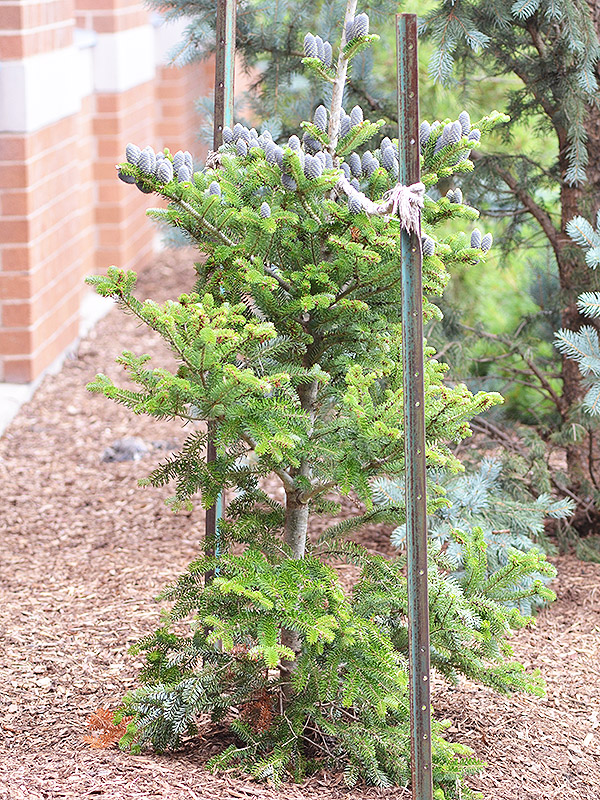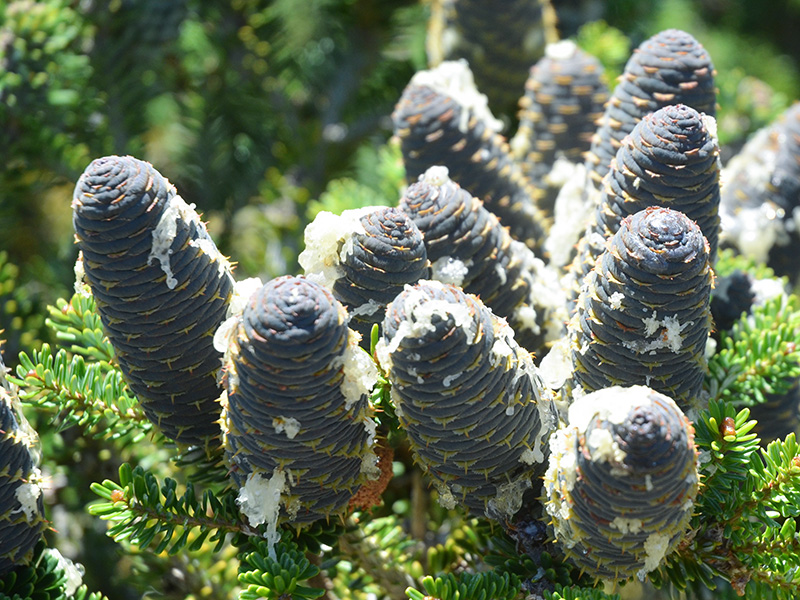
Woody > Abies > Abies koreana > Abies koreana
Abies koreana
Korean Fir
Origin: First grown in North America in 1908. Seed was also collected by E.H Wilson from Korea in October 1917.
| Family |
| Pinaceae |
| Genus |
| Abies |
| Species |
| koreana |
| Category |
| Woody |
| Type |
| Tree (evergreen) |
| Pronunciation |
| USDA Hardiness Zone |
| 5 - 7 |
| Canadian Hardiness Zone |
| 4a - 7a |
| RHS Hardiness Zone |
| H5 - H7 |
| Temperature (°C) |
| -29 -(-12) |
| Temperature (°F) |
| -20 - 10 |
| Height |
| 4.5 - 9 m |
| Spread |
| 2 - 4 m |
Photographs
Description and Growing Information
Flowering Period
| General Description |
| Slow growing, with most specimens being somewhat dwarf. It is slightly more heat tolerant than many firs but still does best in cold climates. |
| Landscape |
| Slightly more heat tolerant than many firs but still performs best in cold climates. |
| Shape |
| Pyramidal. |
| Growth |
| Slow |
| ID Characteristic |
| A small tree that is remarkable for its stubby foilage and bearing a profusion of ornamental cones even while still very young. The cones are 4-6 cm long, rich violet-purple and stand upright above the foliage. |
| Pests |
| Balsam woolly adelgids, bark beetles, spruce budworms, aphids, bagworms, spider mites, root rots, needle rust and twig blight. |
| Leaf Description |
| Needles are thickly set on the stem, 1-1.5 cm long, and are notched or rounded at the broadest point of the needle. |
| Fruit Description |
| Rich violet purple cones, turning beige at maturity: they are 3.5-7 cm long. In Korea, some cones are found to be green. |
| Colour Description |
| Needles are dark green above and whitish beneath. Easily recognizable for its rich violet-purple cones. |
| Propagation |
| By seed or grafting. |
